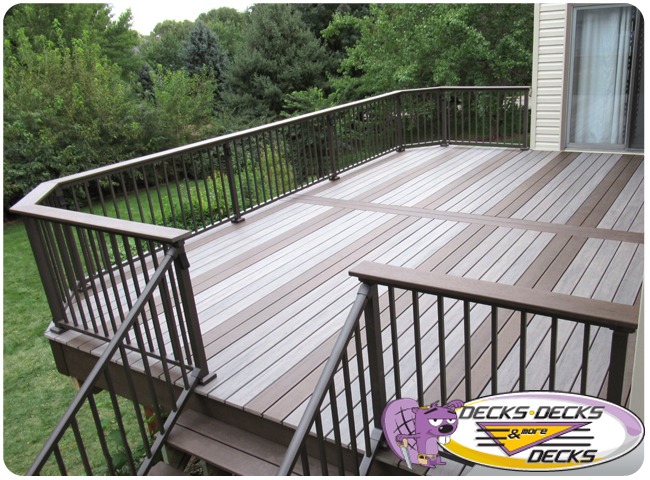Deck Board Replacement: Revitalize Your Outdoor Space
Over time, deck boards can become worn, cracked, or damaged due to weather exposure and regular use. Replacing old or damaged deck boards is an essential maintenance task that can breathe new life into your deck, improving its safety, appearance, and longevity. Learn about the process of deck board replacement and how it can revitalize your outdoor space.
Why Replace Deck Boards?
- Safety First: Damaged or splintered deck boards can pose a safety hazard, especially if they’re loose, warped, or cracked. Replacing these boards ensures a safe and secure surface for walking, sitting, and entertaining.
- Restore Aesthetics: Over time, deck boards can fade, stain, or become discolored. Replacing old boards with new ones can refresh the look of your deck, giving it a clean and well-maintained appearance that enhances your outdoor space.
- Prevent Further Damage: If left unchecked, damaged deck boards can lead to more extensive issues, such as rot spreading to the deck’s frame. Replacing compromised boards promptly helps prevent further deterioration and costly repairs down the line.
- Increase Deck Lifespan: Regular maintenance, including deck board replacement, can significantly extend the life of your deck. By keeping your deck in good condition, you’ll enjoy many more years of outdoor enjoyment without the need for a full deck replacement.
 Signs It’s Time to Replace Deck Boards
Signs It’s Time to Replace Deck Boards
- Cracks and Splits: Boards that are cracked or split can weaken over time, making them prone to breaking. Replace any boards with visible damage to maintain the deck’s structural integrity.
- Warping or Cupping: Warped or cupped boards can create uneven surfaces, which can be both unsightly and unsafe. Replacing these boards will restore the deck’s flat and even surface.
- Rot and Decay: Wood rot is a serious issue that can compromise the strength of your deck. If you notice soft spots, discoloration, or signs of decay, it’s time to replace the affected boards.
- Loose or Wobbly Boards: Deck boards that are loose or wobbly may indicate that the fasteners have failed or the wood has deteriorated. Replacing these boards ensures a stable and secure deck surface.
Deck Board Replacement Process
- Inspection and Assessment: Begin by inspecting the entire deck to identify any boards that need to be replaced. Check for signs of damage, rot, or wear, and make note of the boards that require attention.
- Remove Damaged Boards: Carefully remove the damaged boards using a pry bar or drill to remove the screws or nails. Take care not to damage the surrounding boards or the deck frame during removal.
- Measure and Cut New Boards: Measure the space where the old boards were and cut the new replacement boards to size. Ensure that the new boards match the existing ones in material, thickness, and width.
- Install the New Boards: Place the new boards in position and secure them with deck screws or nails, making sure they’re flush with the surrounding boards. Be sure to leave a small gap between boards for drainage and ventilation.
- Finishing Touches: Once the new boards are installed, you may want to sand the surface to smooth out any rough edges. If the deck is stained or sealed, apply a matching finish to the new boards to blend them with the rest of the deck.
Choosing the Right Decking Material
- Wood: Traditional wood decking offers a natural look and feel, but requires regular maintenance, including staining and sealing. When replacing deck boards, choose pressure-treated wood or rot-resistant species like cedar or redwood for durability.
- Composite: Composite decking is a low-maintenance option made from a blend of wood fibers and plastic. It’s resistant to rot, insects, and fading, making it a long-lasting choice for deck board replacement.
- PVC: PVC decking is a synthetic material that’s highly durable and resistant to moisture, making it ideal for decks exposed to harsh weather conditions. It’s also easy to clean and maintain.
Revitalize Your Deck with New Boards
Replacing old or damaged deck boards is a cost-effective way to breathe new life into your deck, enhancing its safety, appearance, and longevity. Whether you choose wood, composite, or PVC, properly installed replacement boards can ensure your deck remains a beautiful and functional outdoor space for years to come.

